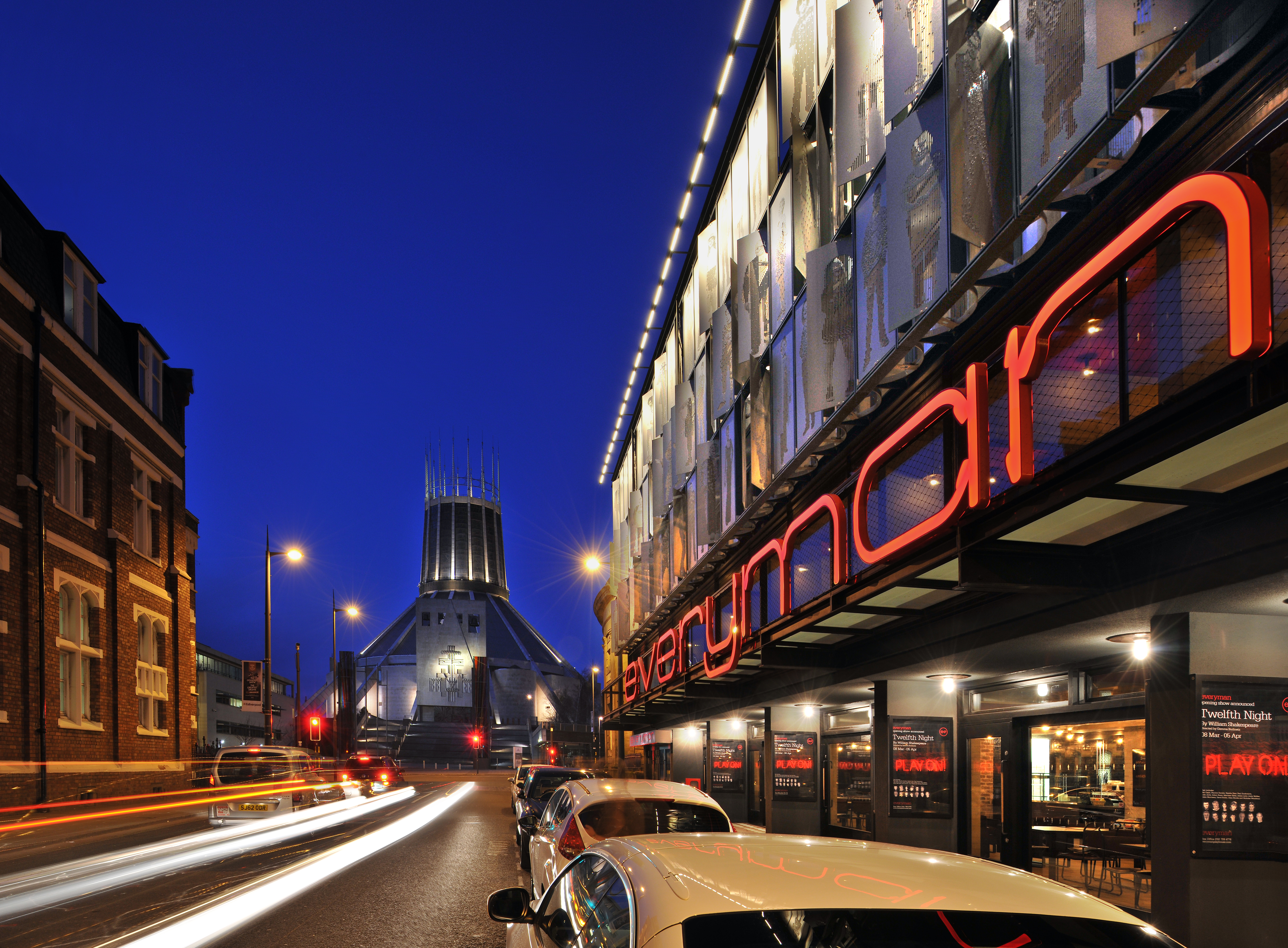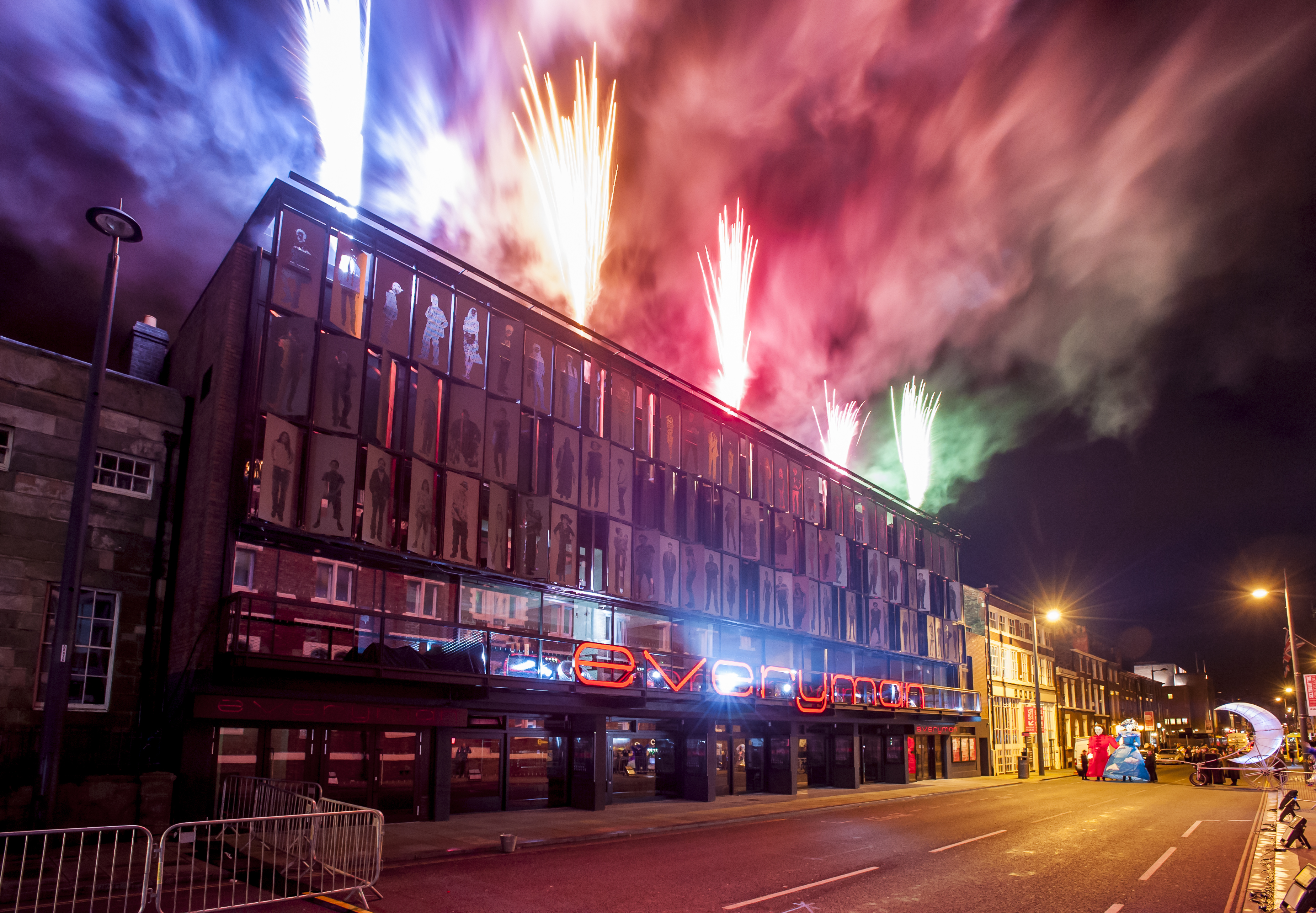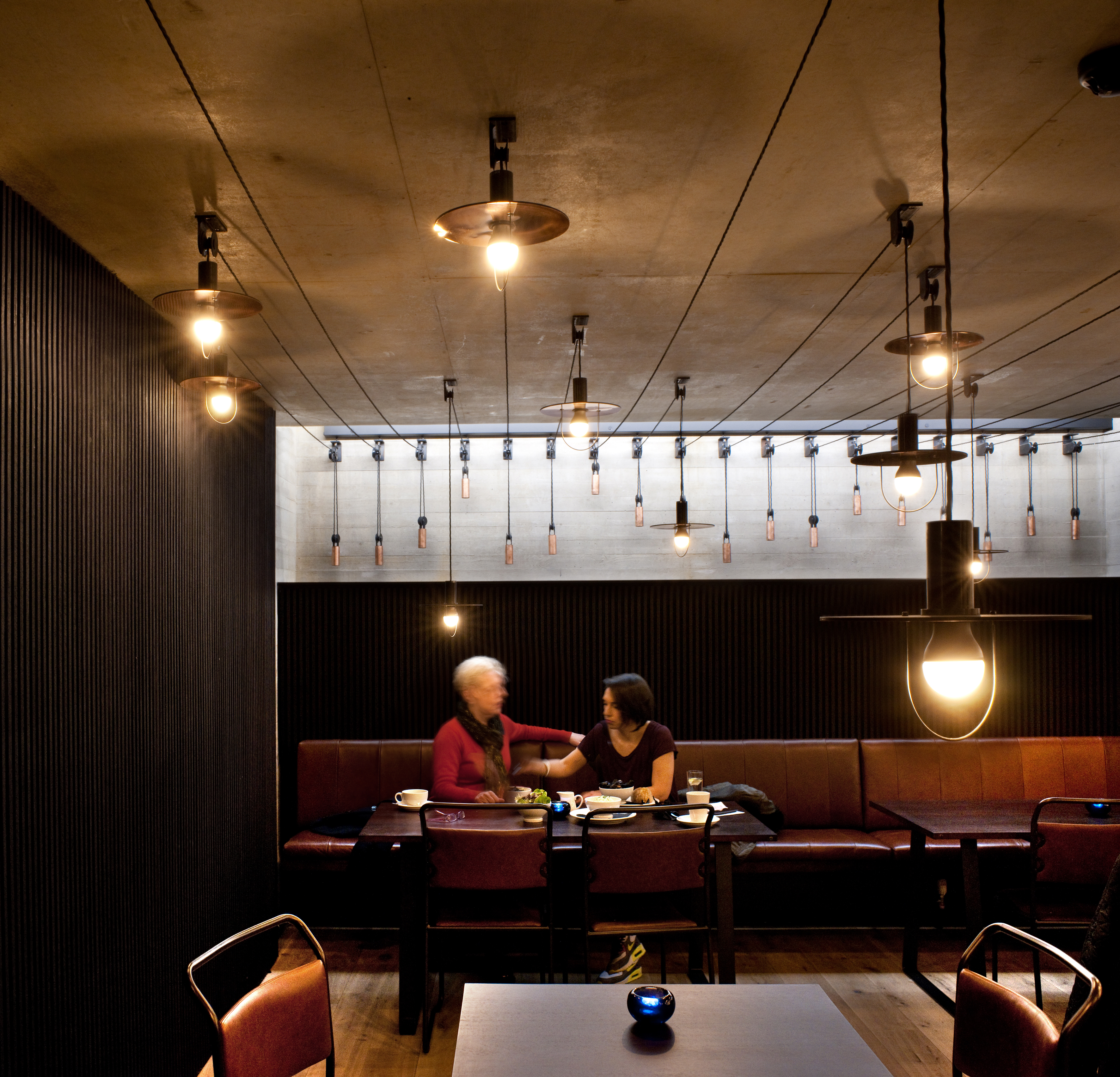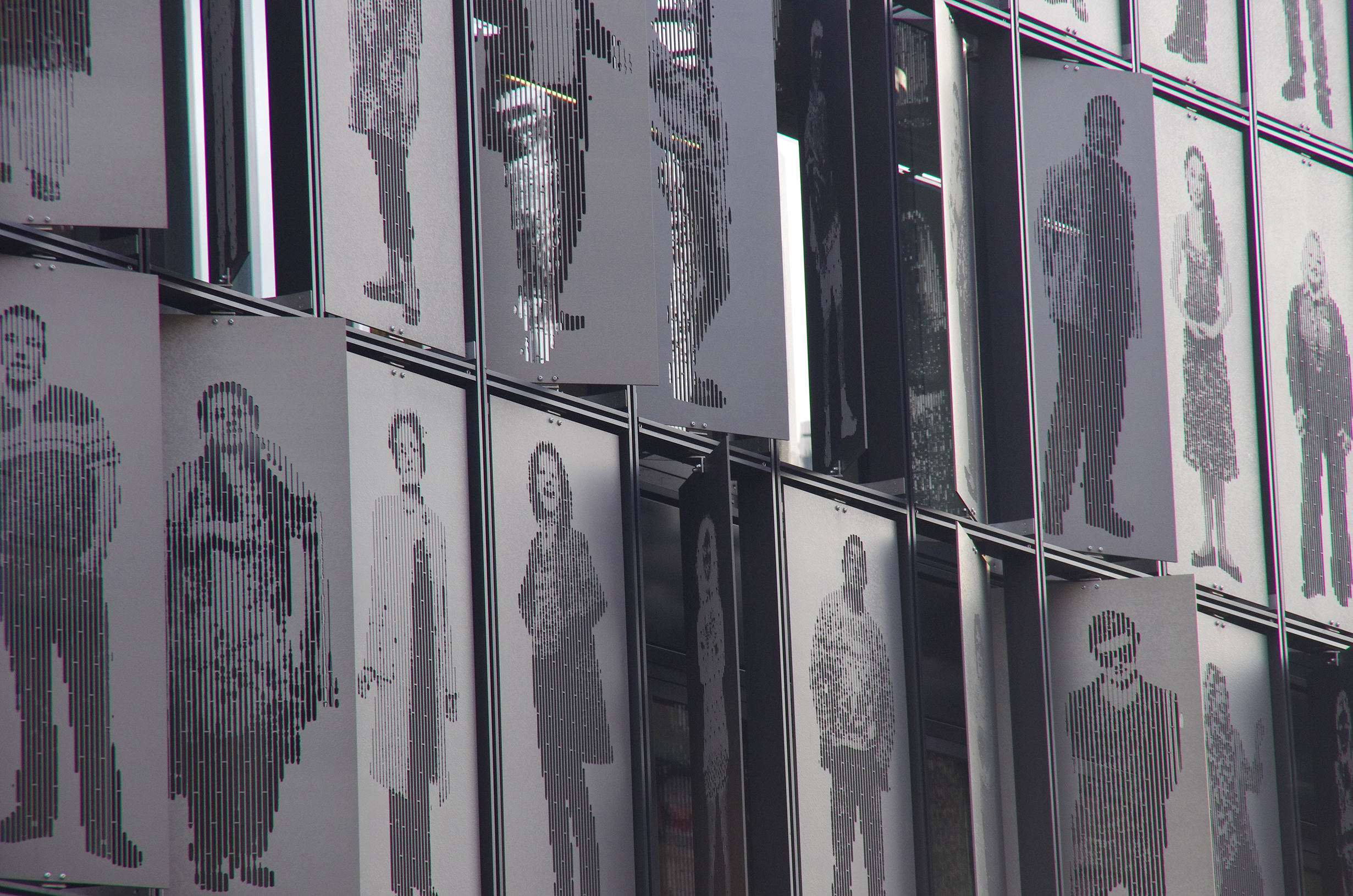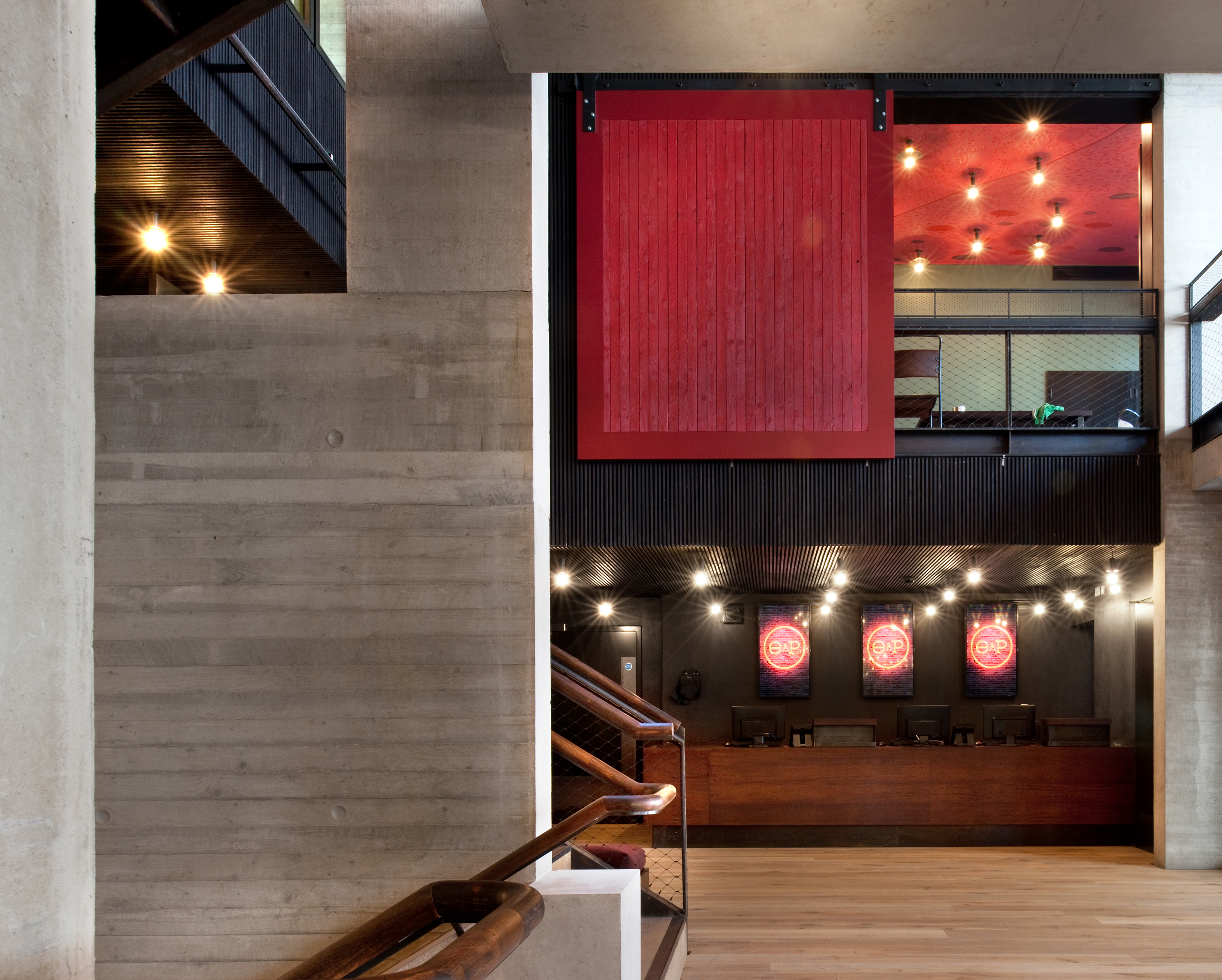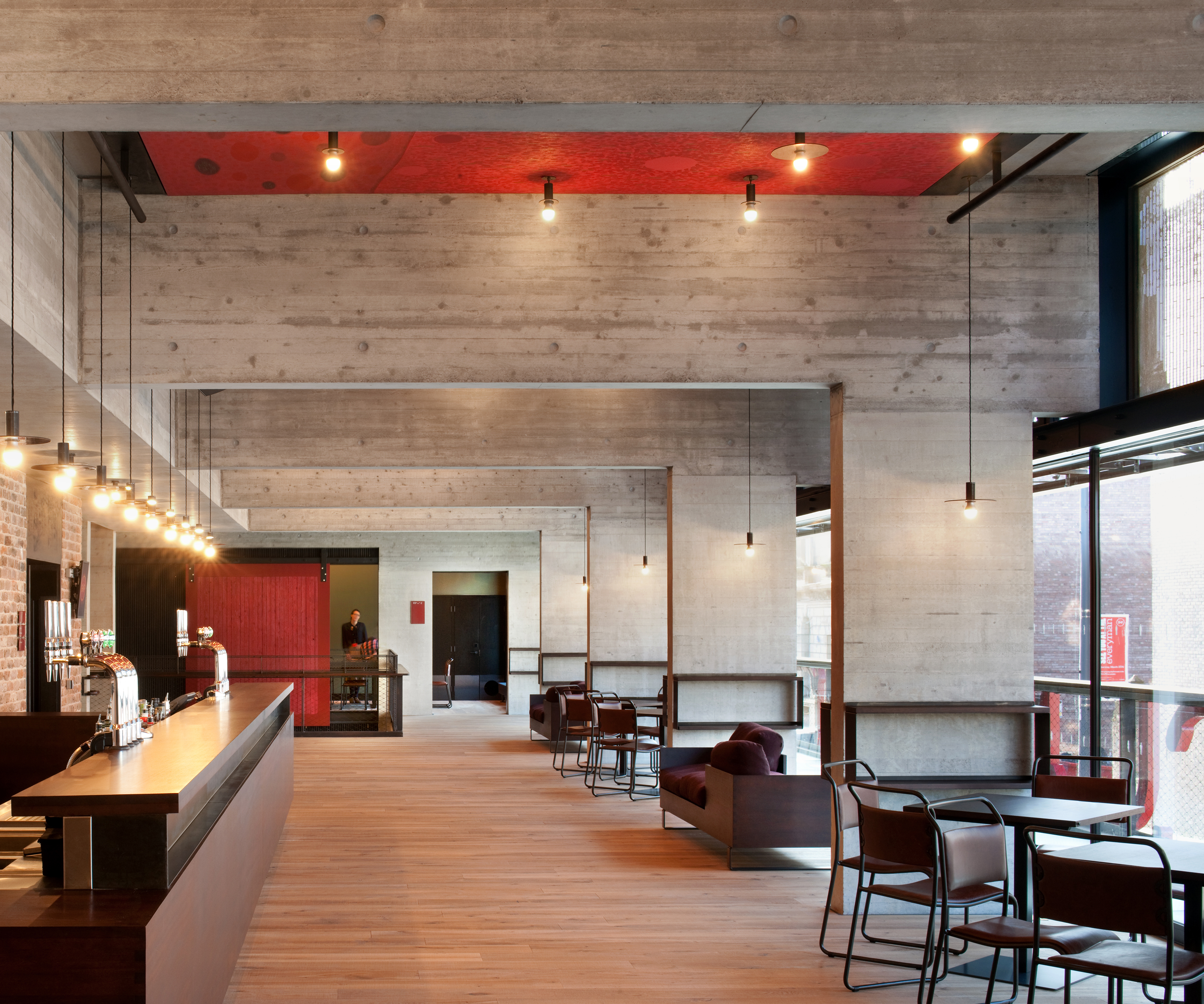The new Everyman Theatre in Liverpool by Haworth Tompkins has won the coveted RIBA Stirling Prize 2014 for the best building of the year. Now in its 19th year, the RIBA Stirling Prize is the UK’s most prestigious architecture prize.
The presentation of the RIBA Stirling Prize trophy to Haworth Tompkins took place at a special ceremony on October 16 at the Royal Institute of British Architects in London.
The old Everyman Theatre in Liverpool opened in 1964 in the shell of a 19th-century chapel on one of Liverpool’s main streets. Although a much-loved institution, the building itself was in a state of disrepair.
The decision to pull the theater down and replace it with a new one has been a nine-year project for the architects Haworth Tompkins. They have expertly met a difficult challenge: that of creating an entirely new and sustainable building, while retaining and revitalizing the best-loved features of its predecessor.
The architects were tasked with ensuring that the soul of the old Everyman, one of informality and community ownership—the "theatre of the people"—was carried into the new building. The result is a new building with a striking exterior and elegant interior, all with exceptional attention to detail and sustainability credentials.
RIBA President Stephen Hodder said:
“The success of this exceptional new building lies in the architect’s close involvement with the local community throughout the project. Haworth Tompkins have struck the perfect balance between continuity and change to win the hearts and minds of the people of Liverpool with the vibrant new Everyman. Complementing beautifully with the surrounding listed buildings, it is a ground-breaking example of how to build a daring bold and highly sustainable large public building in a historic city centre. The building exceeds expectations and I am delighted to present Haworth Tompkins with the 2014 RIBA Stirling Prize.”
The judges' citation for the RIBA Stirling Prize winner:
“The new Everyman in Liverpool is truly for every man, woman, and child. It cleverly resolves so many of the issues architects face every day. Its context—the handsome street that links the two cathedrals—is brilliantly complemented by the building’s scale, transparency, materials, and quirky sense of humour, notably where the solar shading is transformed into a parade of Liverpudlians. The ambience of the theatre is hugely welcoming with three elegant and accessible public foyers for bars, lounges and café/bistro. Clever use of materials with interlocking spaces and brilliant lighting make this an instantly enjoyable new public space for the city."
"It is exceptionally sustainable; not only did the construction re-use 90% of the material from the old theater, but all spaces are naturally ventilated including the auditorium with its 440 seats. Clever, out of sight concrete labyrinths supply and expel air while maintaining total acoustic isolation. It is one of the first naturally ventilated auditoria in the UK. The generosity of its public spaces, which, on a tight site, are unexpected and delightful, are used throughout the day and night. As Howarth Tompkins’ first completely new theatre, it is a culmination of their many explorations into the theatre of the 21st century. It is ground-breaking as a truly public building, which was at the heart of the client’s philosophy and ethos. In summary, an extraordinary contribution to both theatre and the city, achieved through clever team working—client, architect, consultants, and contractor—where the new truly celebrates the past.”
This is the first time Haworth Tompkins has won the RIBA Stirling Prize. The firm was previously shortlisted in 2007 for London’s Young Vic theatre. The Everyman is its first new-build theater, among a portfolio of over a dozen theaters from the Royal Court in 2000 to the recent temporary "Shed" outside the National Theatre. Its other projects include a secondary school in Birmingham and Coin Street Community Centre in London. The practice is currently working on a regeneration project in Canning Town and a housing development in Stratford, East London.
The Everyman Theatre was chosen by the judges from the following outstanding shortlisted entries:
-
Library of Birmingham by Mecanoo
-
London Aquatics Centre by Zaha Hadid Architects
-
London School of Economics - Saw Swee Hock Student Centre by O’Donnell + Tuomey Architects
-
Manchester School of Art by Feilden Clegg Bradley Studios
-
The Shard by Renzo Piano Building Workshop
The judges for the 2014 RIBA Stirling Prize were: Spencer de Grey (Chair) - architect, Foster and Partners; MJ Long - architect, Long and Kentish Architects; Cindy Walters - architect, Walters and Cohen; Stephen Kieran – architect, Kieran Timberlake; and Sir Timothy Sainsbury architectural patron and client.
The winners of three other annual RIBA awards were also announced:
-
Stormy Castle, Gower Peninsula, Wales, by Loyn & Co., won the 2014 RIBA Manser Medal for the best new private home
-
House No 7, Isle of Tiree, Scotland, by Denizen Works won the RIBA’s 2014 Stephen Lawrence Prize for best project with a construction budget of less than £1 million
-
Manchester Metropolitan University won the 2014 RIBA Client of the Year. The award recognizes the role good clients play in the delivery of fine architecture.
Related Stories
| Oct 12, 2010
Building 13 Naval Station, Great Lakes, Ill.
27th Annual Reconstruction Awards—Gold Award. Designed by Chicago architect Jarvis Hunt and constructed in 1903, Building 13 is one of 39 structures within the Great Lakes Historic District at Naval Station Great Lakes, Ill.
| Oct 12, 2010
Full Steam Ahead for Sustainable Power Plant
An innovative restoration turns a historic but inoperable coal-burning steam plant into a modern, energy-efficient marvel at Duke University.
| Oct 12, 2010
From ‘Plain Box’ to Community Asset
The Mid-Ohio Foodbank helps provide 55,000 meals a day to the hungry. Who would guess that it was once a nondescript mattress factory?
| Oct 11, 2010
HGA wins 25-Year Award from AIA Minnesota
HGA Architects and Engineers won a 25-Year Award from AIA Minnesota for the Willow Lake Laboratory.
| Oct 11, 2010
MBMA Releases Fire Resistance Design Guide for metal building systems
The Metal Building Manufacturers Association (MBMA) announces the release of the 2010 Fire Resistance Design Guide for Metal Building Systems. The guide provides building owners, architects, engineers, specifiers, fire marshals, building code officials, contractors, product vendors, builders and metal building manufacturers information on how to effectively meet fire resistance requirements of a project with metal building systems.
| Oct 11, 2010
Rhode Island is the first state to adopt IGCC
Rhode Island is the first state to adopt the International Green Construction Code (IGCC). The Rhode Island Green Buildings Act identifies the IGCC as an equivalent standard in compliance with requirements that all public agency major facility projects be designed and constructed as green buildings. The Rules and Regulations to implement the Act take effect in October 2010.
| Oct 8, 2010
Union Bank’S San Diego HQ awarded LEED Gold
Union Bank’s San Diego headquarters building located at 530 B Street has been awarded LEED Gold certification from the Green Building Certification Institute under the standards established by the U.S. Green Building Council. Gold status was awarded to six buildings across the United States in the most recent certification and Union Bank’s San Diego headquarters building is one of only two in California.
| Oct 6, 2010
Windows Keep Green Goals in View
The DOE's National Renewable Energy Laboratory has almost 600 window openings, and yet it's targeting LEED Platinum, net-zero energy use, and 50% improvement over ASHRAE 90.1. How the window ‘problem’ is part of the solution.
| Oct 6, 2010
From grocery store to culinary school
A former West Philadelphia supermarket is moving up the food chain, transitioning from grocery store to the Center for Culinary Enterprise, a business culinary training school.
| Sep 30, 2010
Luxury hotels lead industry in green accommodations
Results from the American Hotel & Lodging Association’s 2010 Lodging Survey showed that luxury and upper-upscale hotels are most likely to feature green amenities and earn green certifications. Results were tallied from 8,800 respondents, for a very respectable 18% response rate. Questions focused on 14 green-related categories, including allergy-free rooms, water-saving programs, energy management systems, recycling programs, green certification, and green renovation.


